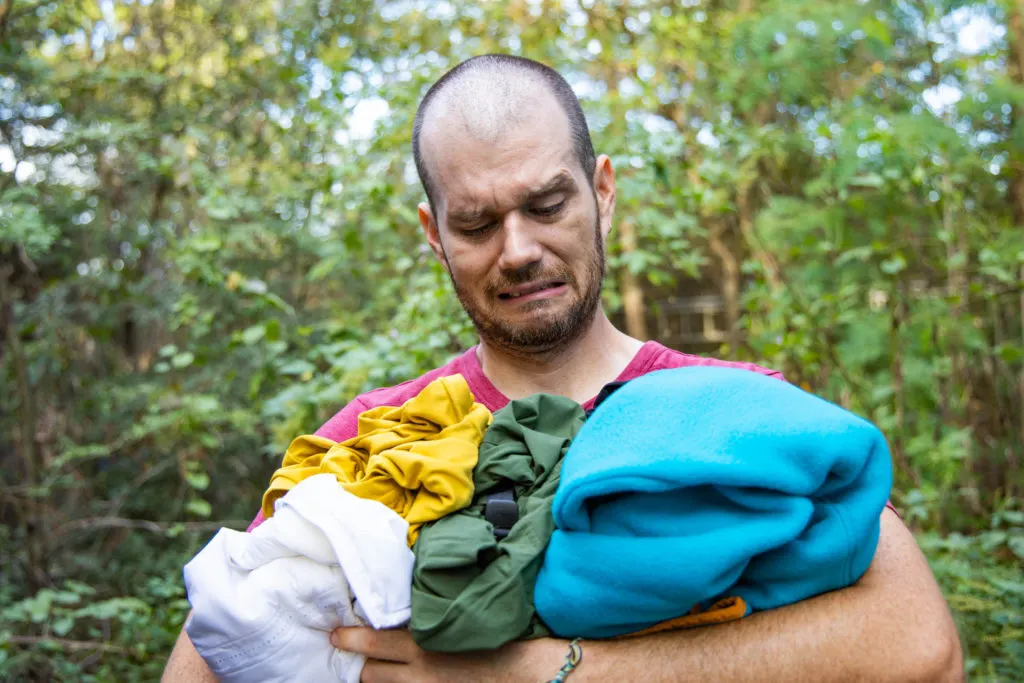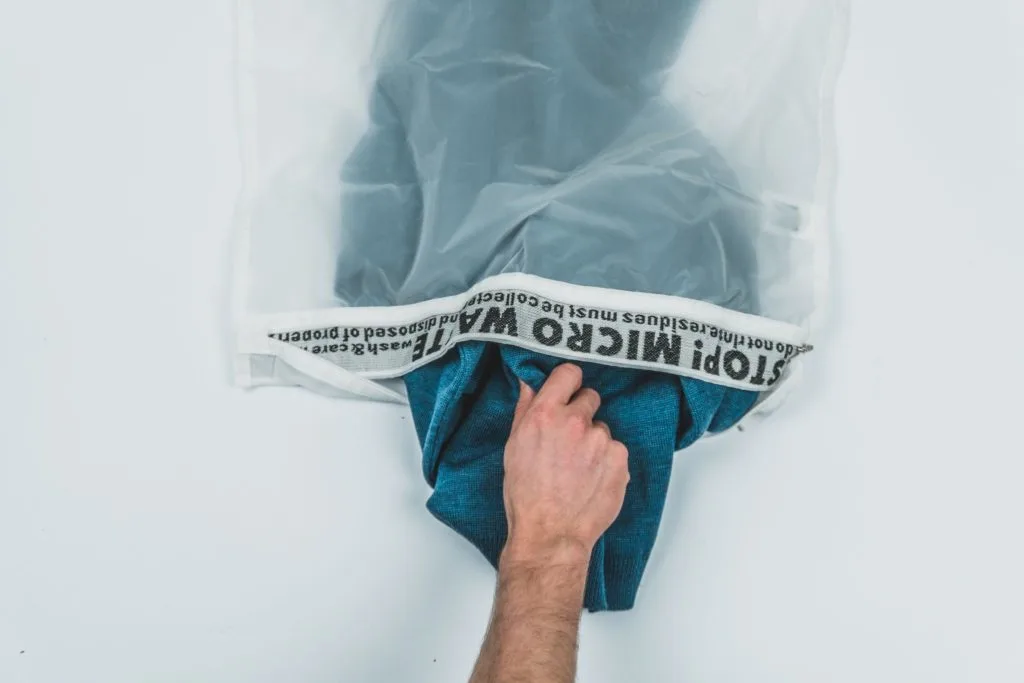The Best Deals on Camping, Backpacking and Outdoor Gear [June 2025]

Microplastics. Perhaps you’ve heard of them. They suck. They’re teeny tiny pieces of plastic materials that break apart and end up in waterways like streams, lakes and oceans, they pollute ecosystems and harm aquatic life, and they can’t be filtered out at wastewater treatment plants. Basically, they’re the worst. And as it turns out, a large percentage of microplastics actually originate from synthetic clothing and materials. And you know what clothing and materials are almost always made of synthetics? Outdoor clothing and materials. Yup. We’re part of the problem. Fortunately, we can also be part of the solution and reduce microplastics that come from our outdoor wear. How? Well, since most of those microplastics are shed by our synthetic clothing and gear right in our washing machines at home in the form of tiny broken fibers, we can take action to reduce and contain those broken fibers at the source. Here’s how.
How to Wash Your Synthetic Clothing to Reduce Microplastics
For starters, no, you really can’t get away from synthetic fabrics in the outdoors. Sure, organic cotton and hemp, bamboo, even lyocell are suitable fabrics for short day hikes, weekend camping trips, and day-to-day life, but in extreme environments where the ability to stay dry and warm can mean the difference between life or death, synthetics are actually really important: they dry quickly, wick moisture, and keep you warmer, even when wet. Yes, wool can do that, too, but since wool is unsustainable and encourages violence and exploitation of animals, we never recommend it (read more about why in this article).
Fortunately, synthetics are getting better. Many are made of recycled materials now and others are even recyclable or biodegradable, so that’s a win. But that doesn’t mean microplastics aren’t still an issue. So since synthetics are a necessary evil, at least know how to clean and care for those synthetics so they not only last longer, but keeping from shedding all those sand microplastics in the wash.
Wash with cold water
That’s right. Stop using hot or even warm water to wash your clothes. They don’t need it. In addition to requiring more energy, hot water also causes faster breakdown of synthetic fibers, so just use cold. Your clothes will still get clean, we promise.
Use a shorter cycle
Turns out, not only do you not need to wash your clothes for an hour, but it can also contribute to more fiber breakage. Most washers have an option for a short cycle, so use it.
Don’t use delicate
Ever wondered what makes the delicate cycle different from a normal cycle? We did. Turns out, it uses more water to reduce friction between clothing items. And testing showed that more water actually resulted in more Microplastics fibers! So stick with regular wash cycles.
Skip the dryer
I know, this is crazy talk for Americans who are, for some reason, obsessed with clothes dryers. Listen, guys, most of the rest of the world doesn’t use them; you’ll be fine without one now and then, too. We’ve lived in a tiny house with no dryer for six years, OK. You can trust us. But drying shortens the lifespan of all clothing, not just synthetics, and causes fibers to wear and break faster. Fortunately, synthetics dry fast, so just hang ’em.
Separate the tough stuff
No, I don’t mean tough to wash. I mean the actual tough, rough, and hard fabrics. Don’t wash that stuff with soft, delicate synthetic clothing if you can help it. The friction of soft and hard rubbing against each other can further damage the synthetic fibers.

Use a filter
What do I mean by a filter? Well, there are a few options on the market designed to capture microplastics that break off in the wash. One is an actual filter that you hook up to your washer’s drain hose and literally filters out microplastics using a reusable screen. The other doesn’t require any handyman skills and is the solution we use: the Guppyfriend (find it here). It’s a bag that captures most microplastic fibers that break off of your clothing in the wash. You just toss in your synthetics, zip it up, and after a few uses, pick out the microfiber lint that’s collected in the corners and toss it. Easy peasy. Those laundry balls that advertise that they catch microfibers in the wash, though? Take a pass. Studies show their benefits are negligible.
Wash less
Oh, and here’s another option! Wash your synthetics less! That fleece zip-up or pullover, leggings or running shorts probably don’t need washed after every wear. In fact, water-conscious brand Janjii recommends that you don’t wash their athletic clothing after a single use. OK, if that polyester tee smells really bad, go for it. But if not, get a few more wears in before tossing it in the machine.
Bottom Line
Long story short, synthetics are here to stay, at least for now. So it’s important that we all do what we can to reduce our impact wherever we can. And frankly, these are freaking easy, mostly free ways to do just that, so no excuses. You hear me? I said no excuses! So wash responsibly, wander on, repeat.
•
Read more: Does Sustainable Fleece Exist: Synthetics, Fleece and Microplastics
•
This post contains affiliate links, which means when you make a purchase, we may receive a small percentage of the sale. But don’t worry; you won’t pay more, you just help support more great content like this from Terradrift!

Gira Bhakta
Tuesday 2nd of November 2021
Thank you for this timely article. I recently bought some microfiber washcloths and got a lecture from my dear partner about how the microplastics are killing ocean life :( I did not know! We are investigating the options to reduce our contribution to the problem, and your article is very helpful! Thank you!
Alisha McDarris
Tuesday 2nd of November 2021
Absolutely, Gira! Happy to help! It's so hard to eliminate every single thing that sheds microplastics, right? So it's good to know there are at-home solutions for capturing them! We use the Guppyfriend religiously at our house!